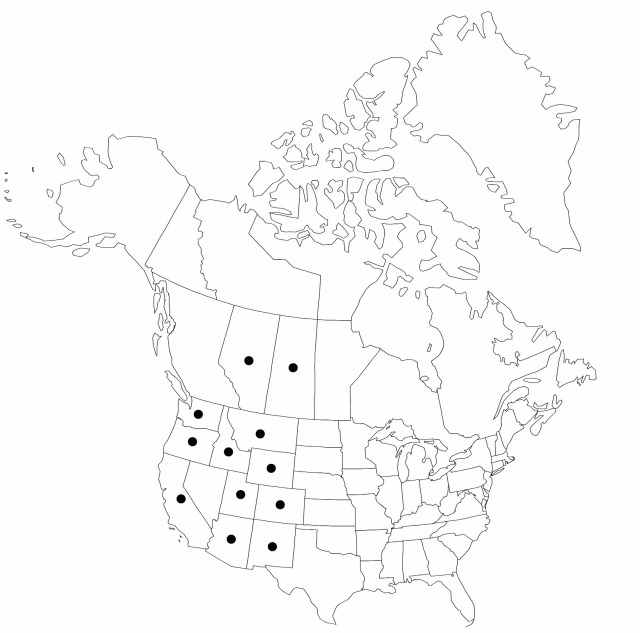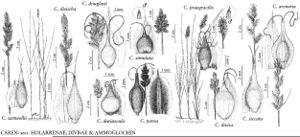Carex simulata
Bull. Torrey. Bot. Club 34: 604. 1908.
Rhizomes coarse, 1.5–2.8 mm thick, typically with long, unbranched segments from which shoots arise singly every few nodes. Culms sharply trigonous, (10–)20–80 cm, scabrous-angled distally. Leaves: basal sheaths dark brown; sheaths with hyaline inner band, apex prolonged 0.3–1.6 mm beyond base of blade, glabrous; ligules 0.6–2.7 mm; blades 1–3.7 mm wide. Inflorescences dense to elongate, 1–3 cm; spikes 4–12(–18), usually unisexual; staminate spikes lanceoloid; pistillate spikes ovoid. Pistillate scales reddish brown to dark brown, with narrow hyaline margins, ovate, apex acute to acuminate-awned, shiny. Anthers 1.8–3.1 mm, apiculus smooth to warty (30X). Perigynia dark reddish brown, essentially veinless, stipitate, broadly ovate to rhombic-orbicular, thickly plano-convex, 1.8–2.8 × 1.1–1.7 mm, shiny; beak 0.25–0.5 mm, hyaline, oblique or obscurely bidentulate.
Phenology: Fruiting Jun–Aug.
Habitat: Wet meadows, marshes, seeps, fens, bogs, stream banks, lakeshores, ditches, tolerant of alkaline soils
Elevation: 600–3100 m
Distribution

Alta., Sask., Ariz., Calif., Colo., Idaho, Mont., N.Mex., Oreg., Utah, Wash., Wyo.
Discussion
Selected References
None.
